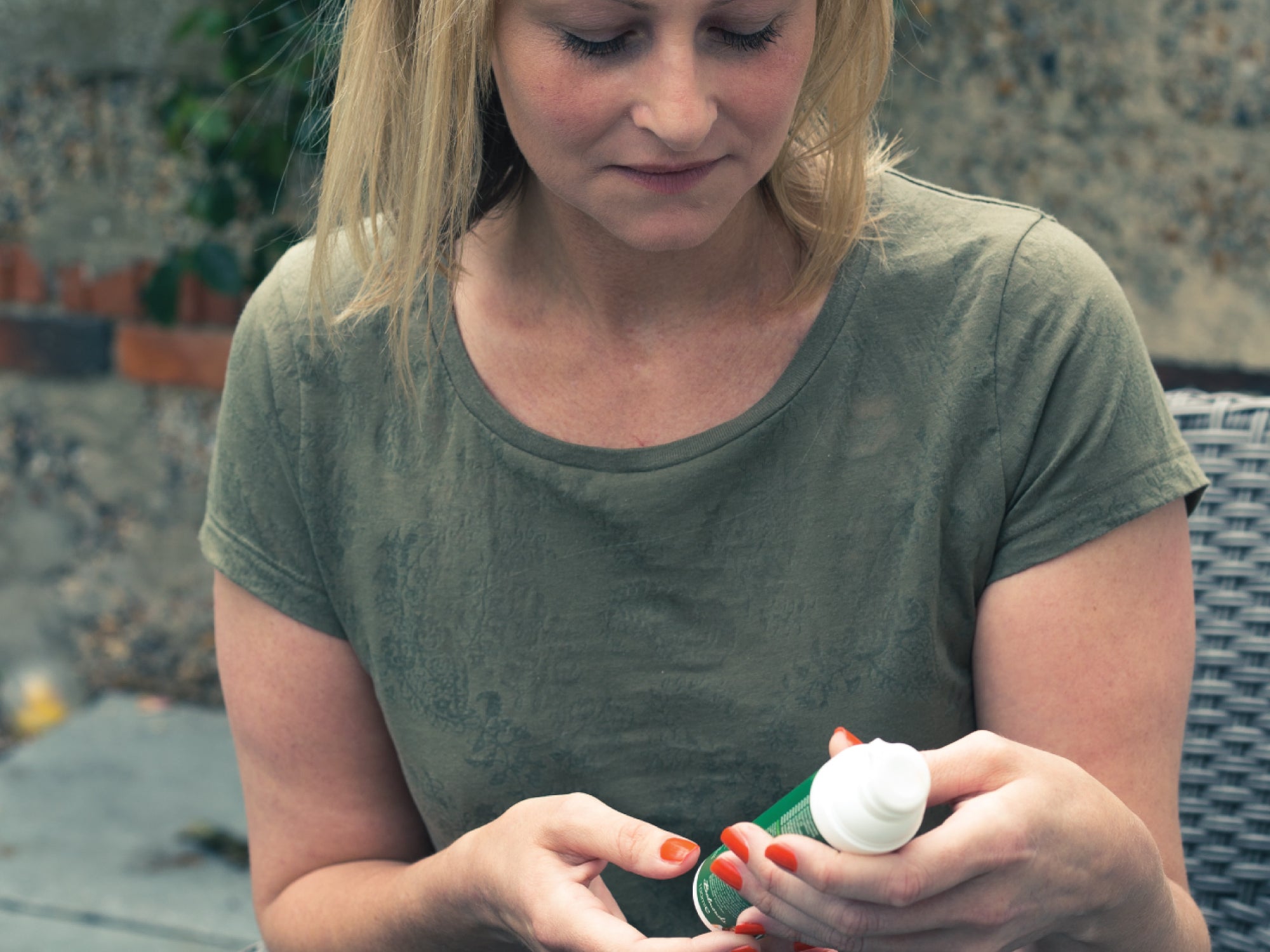 Seborrheic dermatitis on the face can be pretty uncomfortable, with itchiness, sore patches and flaking skin. Any treatment will focus on getting the symptoms under control, building the skin’s resilience, and preventing future flare-ups.
Seborrheic dermatitis on the face can be pretty uncomfortable, with itchiness, sore patches and flaking skin. Any treatment will focus on getting the symptoms under control, building the skin’s resilience, and preventing future flare-ups.
Seborrheic dermatitis is a persistent chronic condition, so any treatment isn’t a one-off cure, and is more a strategy for managing something that is likely to recur from time to time.
- If you go to your GP or dermatologist they might prescribe medication to combat any fungal infection present, such as topical antifungal medicated creams.
- In severe cases, some GPs may still prescribe corticosteroids, but current advice would suggest that you check the side-effects of steroids on the delicate skin of the face very carefully before using, and certainly try milder, alternative treatments first.
- They may also prescribe nonsteroidal immunosuppressants such as picrolimus or tacrolimus (aka Protopic or Elidel).
If you want to try to manage your seborrheic dermatitis naturally and holistically, you need to go beyond topical treatments and look at building your well-being as a whole, as your skin is part of a system which needs to be functioning healthily as a whole.
Relieving immediate symptoms
Moisturise Although seborrheic dermatitis looks like a condition related to oily skin, it’s actually more about the poor functioning of the skin barrier. Using a good nourishing emollient that can feed the skin with nutrients and EFAs morning and night should help normalise the skin’s regenerative cycle and keep the skin barrier robust.
Go Natural Avoid irritating ingredients in shampoos, face cream, make-up, and other cosmetics/toiletries. Strip back your skincare to a couple of basics. Remember that you should keep to this regime for at least one whole cycle of regeneration (2-4 weeks) and it can take 4-8 weeks without irritants for the skin to recover.
Keep Yeast Under Control Use natural antimicrobials to regulate fungal growth; the skin of the face is ultra-sensitive to out-of-balance yeast growth, so make a gentle application of antimicrobial rescue oil (ie Balmonds Scalp Oil) part of your daily routine.
Managing your condition long-term
Reduce Stress If you haven’t already got strategies for managing stress, please do put them in place if you can. Although you can’t change everything that might be causing you anxiety, it’s important to practice as much self-care as you can. Taking walks in nature, going to bed earlier, reducing screen time, spending time with loved ones are all things that can all help increase your resilience to flare-ups.
Improve Your Diet Seborrheic dermatitis seems to be linked to poor diet as well as mental stress. It’s not an easy thing to change if you’re suffering from depression and your skin is flaring up, but it’s worth looking at strategies which might make eating healthier more possible, whether that’s treating yourself to meal-planner boxes, asking for support from friends or making sure you get your five-a-day.
Protect Your Skin Keep your face well-hydrated in hot, dry or cold weather, all of which can make the skin barrier more fragile, and increase the likelihood of flares. Apply a good, non-irritating balm (like Skin Salvation) or cream (such as Balmonds Daily Moisturising Cream) daily.
Suggested products:
Skin Salvation works really well to keep flaky dry skin soft and smooth, and is generally much better tolerated on sore skin than water-based creams which can sting.
Balmonds Scalp Oil is a great antimicrobial rescue oil; it can be massaged into the scalp and the hairline, and left on overnight. (Put down an old towel on our pillow as the oil can stain, and wash out with a mild SLS-free shampoo in the morning.) It can also be used as a topical rescue oil on smaller areas of skin prone to seborrheic dermatitis.
See the next in our series of articles about seborrheic dermatitis here: Which Foods Trigger Seborrheic Dermatitis?

 Seborrheic dermatitis on the face can be pretty uncomfortable, with itchiness, sore patches and flaking skin. Any treatment will focus on getting the symptoms under control, building the skin’s resilience, and preventing future flare-ups.
Seborrheic dermatitis on the face can be pretty uncomfortable, with itchiness, sore patches and flaking skin. Any treatment will focus on getting the symptoms under control, building the skin’s resilience, and preventing future flare-ups.